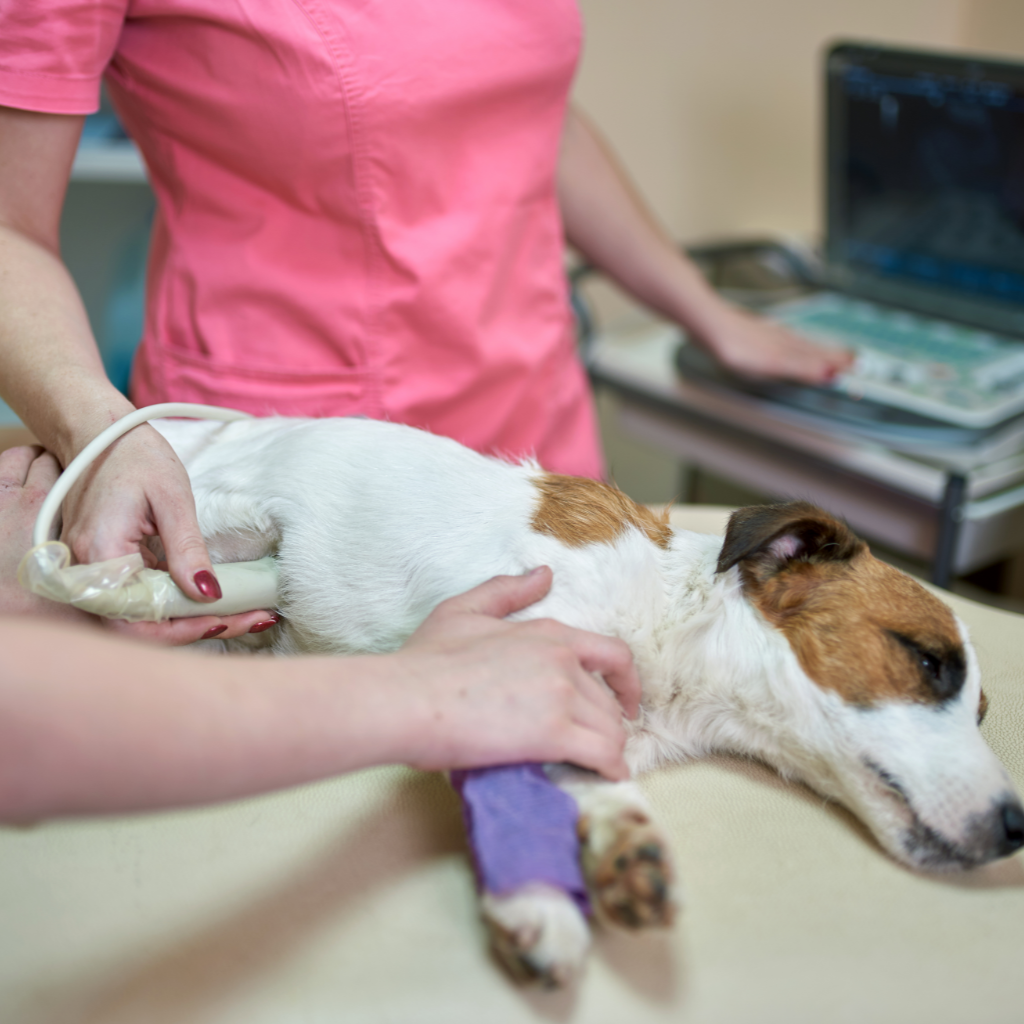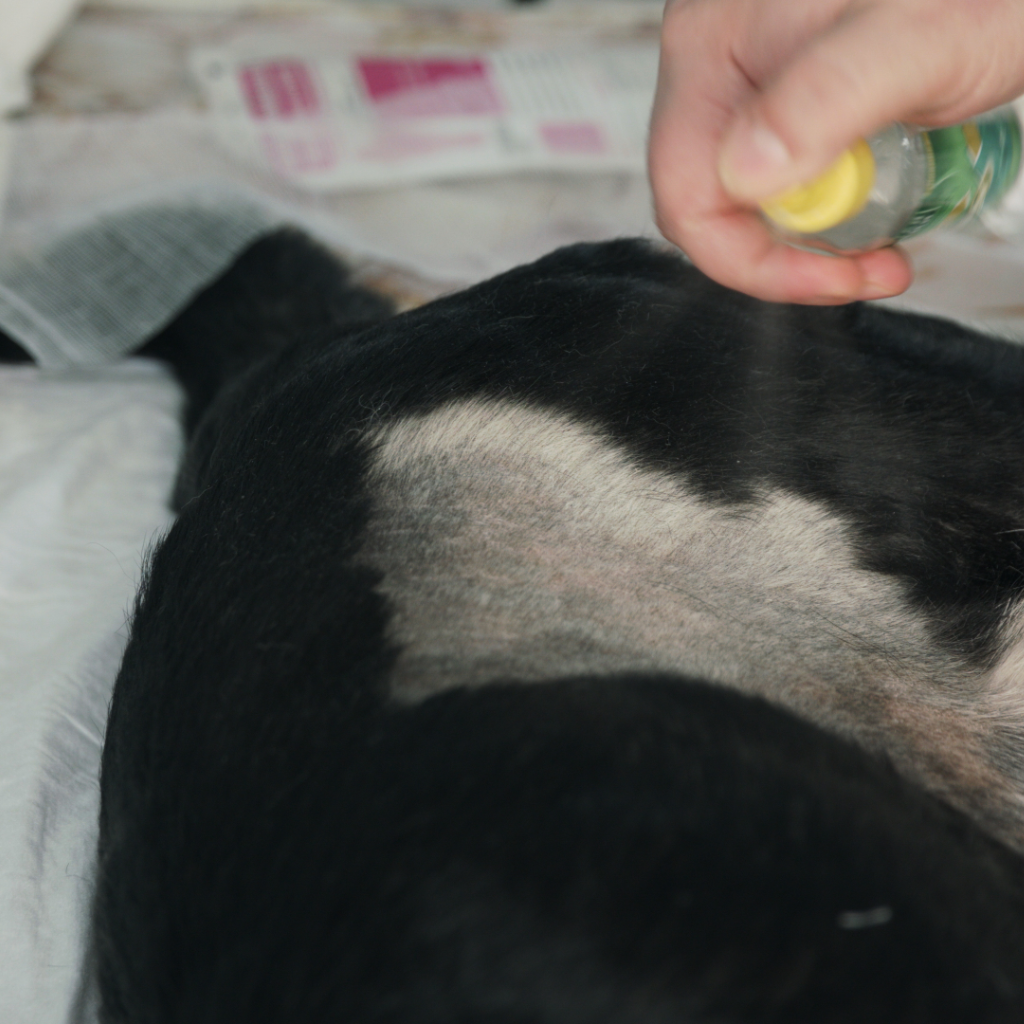Spaying a female dog comes with multiple health benefits and prevents unwanted litters.
Unfortunately, pups can’t tell you whether they were spayed or neutered before you brought them home.
However, there are some helpful clues on how to tell if a female dog has been spayed or whether a male dog has been neutered.
Table of Contents
ToggleHow To Tell if a Female Dog has Been Spayed
There are several clues on how to tell if a female dog has been spayed.
Usually the previous owner will be able to tell you, but what if you do not know the previous owner?
What happens if you have a rescue dog with very little history?
Well don’t worry, here are some ways to tell if a female dog has been spayed.
#1: Look for a Spay/Neuter Incision
For female dogs, spay surgery requires the female’s abdomen to be opened to remove the reproductive organs.
In most cases, the dog will have stitches that might have been removed.
Because of this surgical procedure, most spayed dogs will have a visible incision.
However, this incision may not always be easy to detect.
It is generally quite small and difficult to see.
You may need to shave your pup’s belly to see the scar.
The scar is usually located in the dog’s midline.
If you manage to see or feel an incision on your dog’s abdomen, it may be due to a prior hernia or a cesarean surgery that both leave similar scars.
It’s best to see a qualified vet for confirmation rather than end up with an accidental litter!
For male dogs, simply check the presence of testicles.
Neutering usually involves surgically removing the testicles to prevent male reproduction.
#2: Check for Secondary Sexual Traits
You will notice that a spayed dog’s mammary glands and nipples are smaller as compared to those of intact, non-fixed females.
However, there is no solid evidence that grants any accuracy to this size difference.
For this is reason, it is not a reliable method on how to tell if a female dog has been spayed.
#3: Wait for a Heat
In most cases, you may just have to wait until your female dog displays signs of heat.
Of course, before the heat period arrives, treat her with caution, as if she was intact.
Most dog breeds generally go into heat every 6-7 months, but there are some exceptions, depending on the breed.
For example, if you own a female Basenji, you may have to wait a whole year to see any signs of heat.
These breeds get to heat only once every year, mostly in fall.
Again, you may need to consult your vet on this assumption since some spayed females still go on heat, especially if some ovarian tissue was left behind during the surgery.
In such cases, the dog may still produce hormones that exhibit signs of being on heat.

#4: Investigate the Dog’s Medical Records
A great way how to tell if a female dog has been spayed is to check their medical records.
This may be a bit tough, especially if you don’t have any details about the previous owner.
But if you know the name of your dog’s previous owner, you can try calling a few vet offices in their neighborhood to see if they still have the pet’s medical records.
While professional vets usually maintain client confidentiality, sometimes they can tell you if a dog was spayed or neutered provided they understand your dilemma.
If your town requires licensing of dogs, you may also get help by calling your local city hall or animal control as they often record such information.
#5: Check for a Tattoo or Microchip
Dogs are sometimes tattooed for identification purposes.
In most cases, their reproductive status is recorded along with their identity.
Also, look out for any attached microchip as it often contains vital information about the dog, including whether the dog has been desexed.
However, you’ll need a universal reader, which is often available at your local vet or shelter.
Fortunately, most shelters usually check for microchips before giving dogs up for adoption.
#6: Ask Your Vet for Hormonal Testing
Your vet may recommend hormonal testing options should a spay incision be hard to detect.
In some cases, your vet may check for a specific hormone, or even analyze cells collected from the wall of her private parts.
How to tell if a female dog has been spayed by her hormone levels……
It is possible to tell if a dog is spayed by measuring the level of luteinizing hormones present in the blood.
A good percentage of spayed dogs have relatively high levels of this hormone in their blood, whilst intact animals have lower levels.
But, keep in mind that almost 22% of tested intact pups also have high levels of this hormone.
The reason is that intact dogs undergo brief episodic upsurges in the luteinizing hormone concentrations.
Sometimes, vets inject a hormone and later on take blood samples to check for ovarian activity.
While these hormonal tests are not fool-proof, they can together help provide a clearer picture of the fertility of your dog.
According to some clinical studies, hormonal tests can save your dog from undergoing exploratory surgery.
Besides, the cost of spaying a dog or carrying out exploratory surgery is much higher compared to x-rays and hormonal tests; you will want to explore this option before contemplating any invasive method.
In general, hormonal tests can give some insights about your dog’s hormonal status.
The tests include cytology sample (used to check for cornified epithelial cells that indicate estrogen stimulation), serum progesterone concentration, luteinizing hormone test, and anti-Müllerian hormone assay (used to measure Anti-Müllerian hormone, AMH).

#7: Ask for an Ultrasound
Although an ultrasound scan can provide insights on whether or not a dog was spayed, it can be challenging checking for pets that have been spayed but still have some ovarian tissues left behind.
It can also be difficult to locate ovarian remnants anywhere in your dog’s abdomen even by the most experienced ultrasound operators.
#8: Exploratory Surgery
As a last resort, your vet may recommend exploratory surgery, especially for cases of a dog that was spayed and still has some ovarian tissue left behind.
Such may be difficult to detect through ultrasound and may need a more “hands-on” approach to locate and remove.
As you can see, there are multiple ways to determine if your dog has been spayed or not.
Your vet can employ a combination of these methods to get a good indication that your dog will not get pregnant and give birth.
Always consult with your veterinarian to determine your pup’s reproductive status and never make any assumptions—they can end up costing you!
